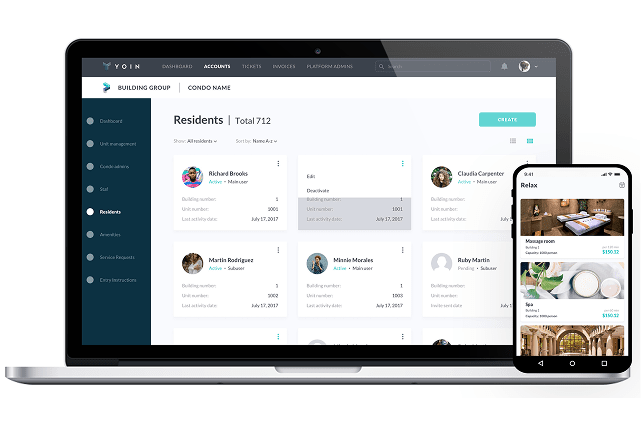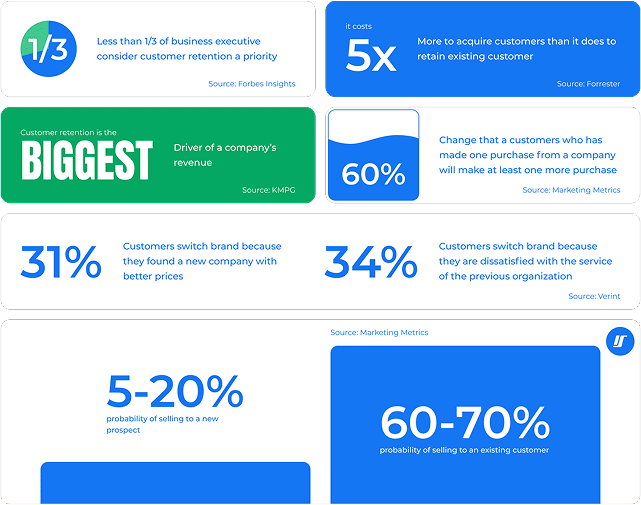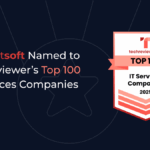As we move through 2025, maximizing return on investment from outsourcing has become a boardroom priority. With rising internal IT costs and greater scrutiny from executives and investors, business and tech leaders alike are under pressure to demonstrate clear value from every dollar spent—especially when that dollar is going to an external partner.
In this article, we’ll unpack the real ROI levers behind effective IT outsourcing—from measuring output quality and delivery speed to managing risks and optimizing vendor relationships. Whether you’re refining an existing partnership or exploring outsourcing for the first time, you’ll find actionable insights to help you drive more impact from your external teams.
We’ll also address common pain points like escalating operational costs, the need for transparency and speed, and the challenge of proving ROI in uncertain markets—equipping you with strategies that turn outsourced support into a strategic advantage. Explore how smarter outsourcing delivers measurable value.
Why Companies Outsource IT in 2025
The global tech landscape in 2025 continues to evolve at breakneck speed, driven by advancements in AI, automation, cloud infrastructure, and cybersecurity. As organizations navigate these changes, they face mounting pressure to innovate faster, optimize costs, and remain adaptable amid ongoing talent shortages and economic fluctuations. In this context, IT outsourcing has transcended its traditional role as a cost-reduction tactic. Today, it’s a strategic imperative—enabling companies to tap into global pools of specialized expertise, accelerate digital transformation, and build scalable, resilient operations. Whether it’s accessing hard-to-find skills or launching new products faster, outsourcing empowers businesses to stay competitive and future-ready in a high-stakes digital era.
What’s Driving Outsourcing in 2025?
Talent shortages remain critical, especially in senior and niche technical roles. With demand for AI, cybersecurity, and cloud specialists outpacing supply, companies turn to outsourcing to fill skills gaps quickly and efficiently—while maximizing their IT outsourcing ROI.
- Scalability is a must. Outsourcing provides on-demand access to development power—enabling teams to scale up for product launches or special initiatives without committing to long-term overhead.
- Cost control is under the microscope. As internal IT budgets tighten, decision-makers are leaning on outsourcing partners to reduce operational burdens while maintaining or improving delivery standards.
This shift reflects a deeper strategic imperative: businesses are looking for more than just support. They want outsourcing partners who can align with product roadmaps, optimize delivery pipelines, and contribute to measurable outcomes.
Is Outsourcing Still Worth It in 2025?
Yes—when done right. The companies that reap the greatest returns aren’t the ones looking solely at hourly rates. They’re the ones who treat outsourcing as a performance lever—focusing on transparency, accountability, and integration with business goals. In this context, outsourcing becomes a multiplier of internal efforts, not a workaround.
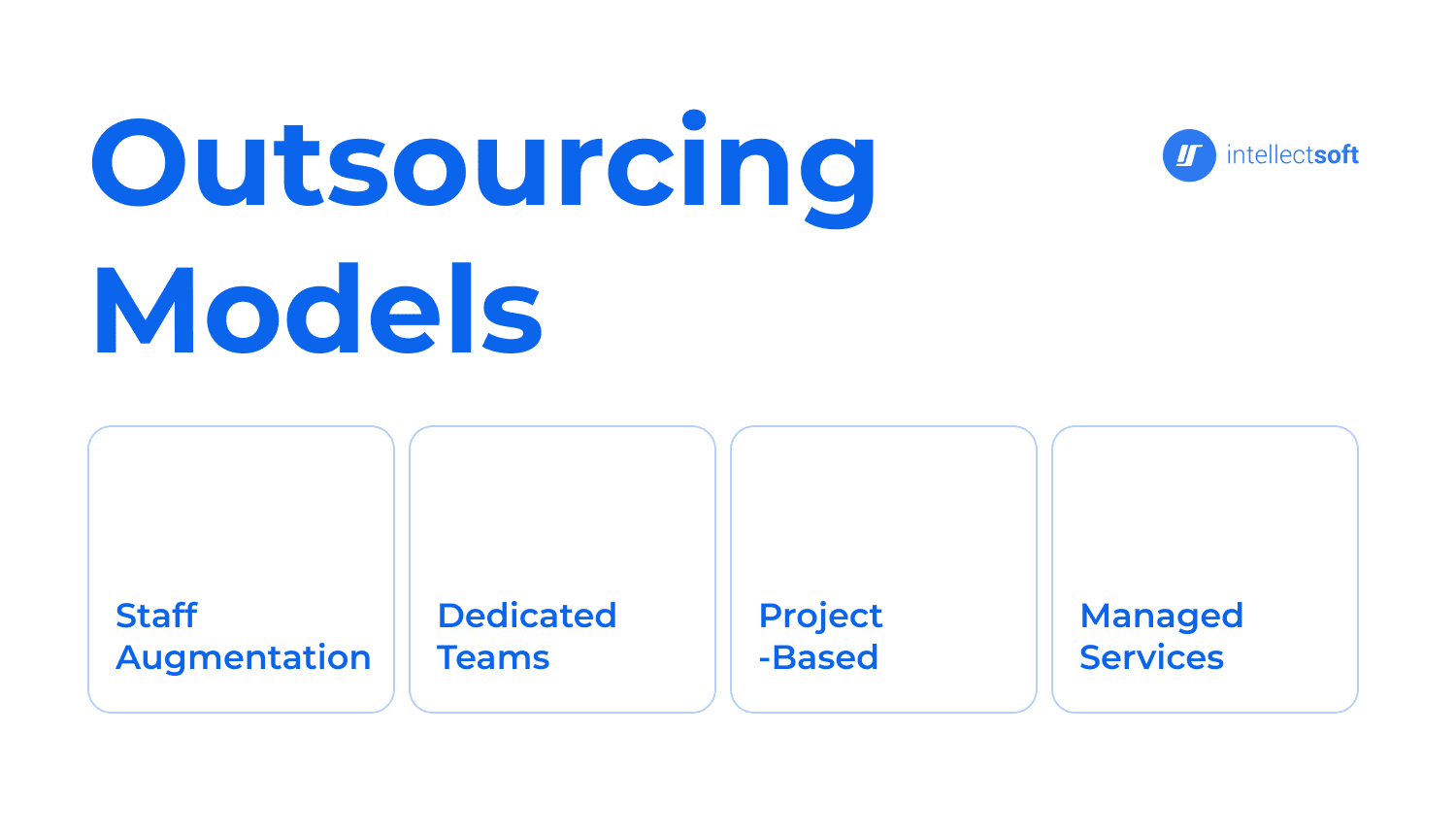
What Outsourcing Models Are Available Today?
- Staff Augmentation: Add specific roles or skills to your internal team on-demand. Ideal for plugging skill gaps without the long hiring cycle.
- Dedicated Teams: A fully managed external team working as a unit, often integrated into your processes. Best for long-term projects requiring deep domain knowledge.
- Project-Based Outsourcing: Outsource entire initiatives with a clear scope and timeline. Useful for well-defined, outcome-oriented work.
- Managed Services: Hand off ongoing IT operations, such as infrastructure or application maintenance, for predictable performance and cost control.
Choosing the right model depends on your goals—whether that’s faster product delivery, improved cost-efficiency, or accessing skills that are hard to hire for locally.
Understanding ROI in IT Outsourcing
When we talk about ROI in IT outsourcing, many still default to thinking about cost savings. But in 2025, that’s far too narrow. The true return on investment comes from outsourcing’s ability to increase speed, enhance operational agility, and unlock innovation that drives business outcomes.
Today, organizations aren’t just outsourcing to save—they’re outsourcing to scale faster, respond to market changes more effectively, and gain access to specialized expertise that’s hard to hire for in-house. The question is no longer whether outsourcing is cheaper, but whether it delivers measurable improvements in performance, delivery timelines, and customer satisfaction.
Measuring this value starts with tracking the right indicators. For example, cost per release gives insight into how efficiently you’re shipping features. Time-to-market reveals how quickly you’re able to respond to opportunities. Defect rates expose the quality of delivery, while customer satisfaction scores tell the real story of how your outsourced efforts are impacting the end user. Team velocity, another often-overlooked metric, reflects your actual throughput—how much work is getting done and how consistently. Together, these metrics help paint a fuller picture of success, beyond just dollars spent. See what ROI-focused outsourcing can do for your business↗.
Still, many companies struggle to prove ROI in a way that resonates with senior leadership. One common issue is focusing too heavily on output volume instead of business impact. Delivering a hundred features doesn’t mean much unless those features solve real problems or drive engagement. Another frequent mistake is neglecting hidden costs—like onboarding delays, rework due to misalignment, or inefficiencies caused by unclear ownership. Without considering these, the ROI picture can be misleading.
Ultimately, maximizing IT outsourcing ROI requires both a strategic approach and a clear story—one that connects day-to-day delivery performance to top-line and bottom-line results.
It’s not just about the initial savings. I’ve seen teams that cut costs but ended up with delays, poor product quality, or frustrated end users. The clients that really see value are the ones who treat their outsourcing partners like an extension of the team and align on outcomes early on. When both sides are working toward the same goals, that’s when the ROI becomes obvious.
Common Challenges That Kill ROI — and How to Fix Them
Even the best outsourcing strategies can fall short if execution isn’t aligned. Companies often struggle with issues that silently erode ROI—like miscommunication, misaligned expectations, or poor integration with internal workflows. The good news is that most of these pitfalls are avoidable with the right structure, practices, and partner alignment. Below are some of the most common challenges we see—and practical ways to address them before they undermine your investment.
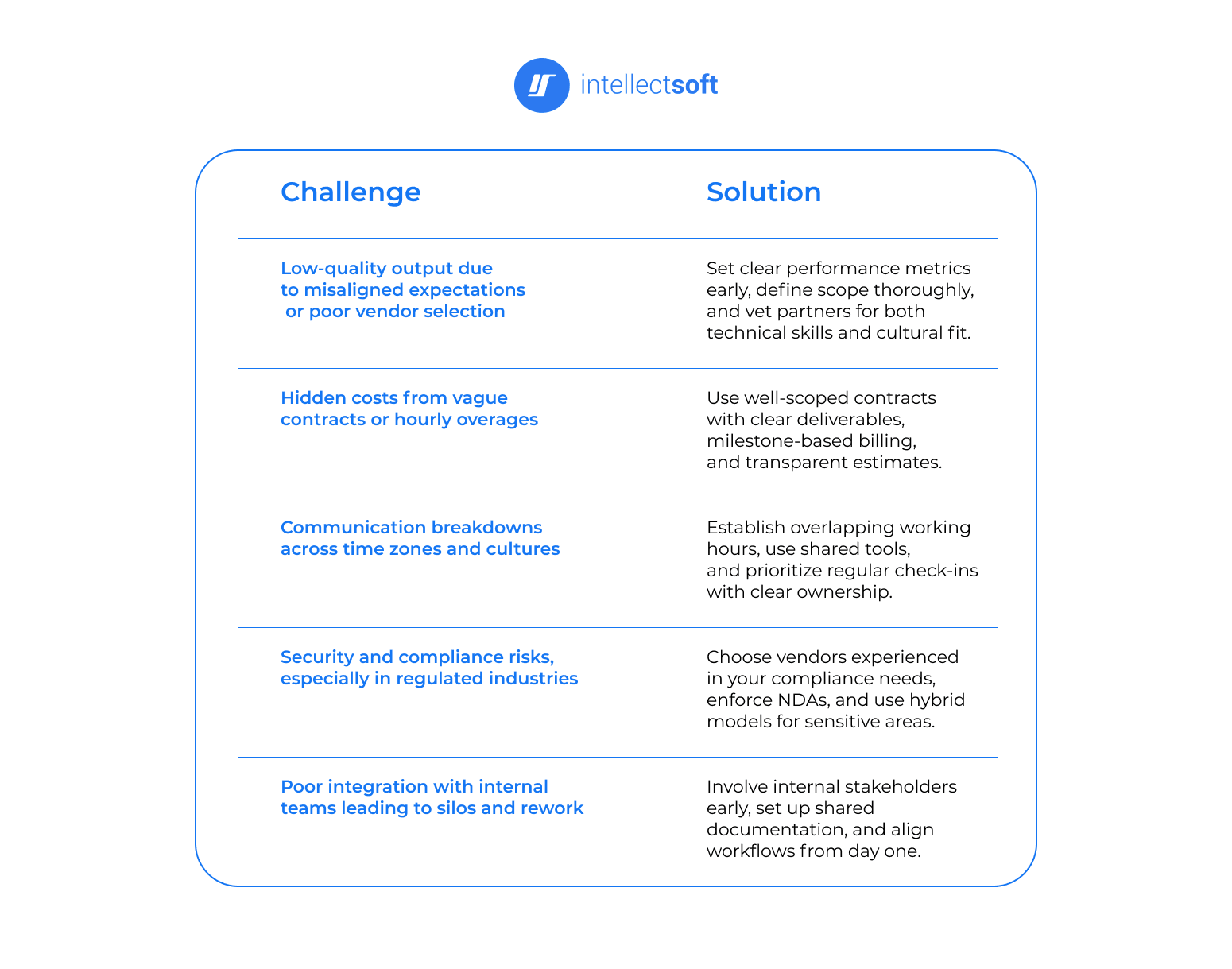
Misalignment usually starts small—maybe a scope detail wasn’t clarified, or a sprint retrospective didn’t happen. But over time, these gaps compound and hit delivery hard. The most effective teams I’ve worked with treat communication like a discipline: daily syncs, living documentation, and constant feedback loops. That’s what keeps ROI on track.
How to Choose the Right Outsourcing Partner for Maximum ROI
Choosing the right outsourcing partner can make or break your ROI. A misaligned vendor may lead to delays, rework, and poor quality—while the right one helps drive growth, speed, and innovation.
Look beyond price. A partner should align with your business goals, offer transparency, and show a clear understanding of your market—not just promise lower costs. Watch out for red flags like vague communication, lack of relevant case studies, or one-size-fits-all proposals.
During vendor evaluation, ask about quality control, team structure, data security, and past project outcomes. Focus on how they solve problems and communicate—not just what they deliver. These factors play a crucial role in shaping your overall IT outsourcing ROI.
One of our clients, Skroote, came to us with a clear goal—build a user-friendly app that aggregates streaming content across platforms. We delivered a scalable solution with a clean interface, integrated ChatGPT-powered search, and cross-platform development using React, React Native, and Java. The prototype helped them secure funding and validate their product idea, positioning them for growth.
Strategies to Increase ROI Throughout the Outsourcing Lifecycle
Maximizing ROI is an ongoing process—not something achieved at kickoff. It starts by defining success early through clear goals, KPIs, and a shared roadmap. Starting small helps build trust and proves value before scaling. Using Agile collaboration keeps teams aligned and responsive, while shared dashboards make performance visible and measurable. Regular check-ins, demos, and retrospectives help keep delivery on track.
Equally important is continuous knowledge sharing. Clear documentation and smooth onboarding ensure outsourced teams stay integrated with internal workflows. With the right structure in place, outsourcing becomes a reliable, value-driving extension of your business.
Real Business Outcomes: What ROI Can Look Like
When outsourcing is done right, the impact goes far beyond technical delivery—it translates into real, measurable business outcomes. The most successful partnerships enable companies to move faster, operate leaner, and innovate more boldly.
We’ve seen clients accelerate time-to-market, optimize internal resources, and unlock new growth opportunities—often simultaneously. These results aren’t theoretical—they’re what outsourcing ROI actually looks like in practice.
Here are just a few examples of tangible ROI outcomes:
- Faster product launch leading to a new revenue stream
- Cost savings reinvested into R&D or customer experience
- Scaling product teams without HR or recruitment bottlenecks
- Entering new markets ahead of competitors
When outsourcing aligns with business goals, the return isn’t just financial—it’s strategic.
Making IT Outsourcing Work for Your Business in 2025
In today’s landscape, IT outsourcing is no longer just about cutting costs—it’s about creating value. When done right, it helps businesses move faster, access top-tier talent, and stay focused on what matters most: delivering impact.
To maximize ROI, it’s critical to define success early, track meaningful metrics, and treat your outsourcing partner as a strategic ally—not just a vendor. The most successful companies approach outsourcing as an extension of their team, with shared goals, transparency, and continuous improvement at the core.
At Intellectsoft, we’ve helped companies across industries turn outsourcing into a growth engine—accelerating delivery, improving quality, and scaling without compromise. If you’re ready to unlock more value from your IT investments, we’re here to help.
Let’s make outsourcing work for your business—strategically, efficiently, and with measurable results.
Source link








